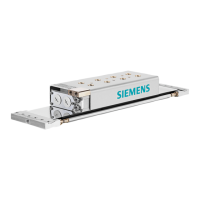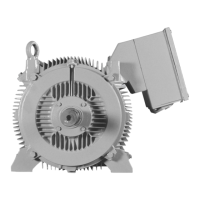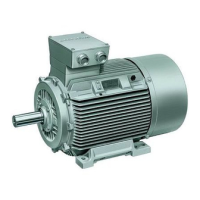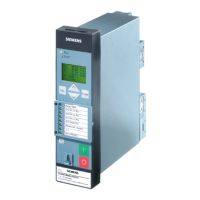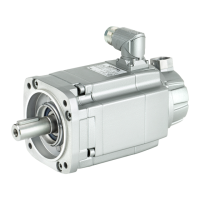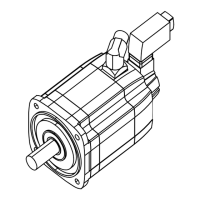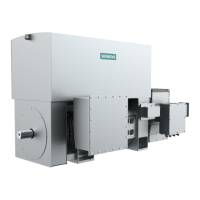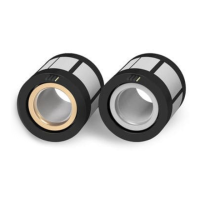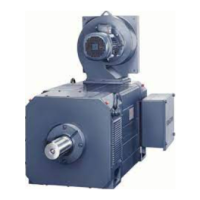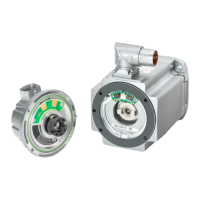Do you have a question about the Siemens LOHER CHEMSTAR 1PS2 and is the answer not in the manual?
Explains how the manual is structured and the meaning of text formatting features.
Outlines duties of plant personnel for safe installation, operation, and maintenance.
Critical warning about explosion hazards if plant conformity is not determined before commissioning.
Essential safety rules for working on electrical equipment in a voltage-free state.
Defines qualifications and training needed for personnel working on the machine.
General precautions and measures to prevent accidents during machine operation.
Procedures for assessing operating risks and monitoring methods in hazardous areas.
Measures to protect sensitive electronic components from electrostatic discharge damage.
Explosion hazards from electrostatic discharge in explosive atmospheres.
Machine designed to meet EMC requirements according to relevant directives.
Machine meets requirements for interference immunity as per IEC/EN standards.
How irregular torque can affect the line power supply via harmonics.
Hazards from electromagnetic fields affecting medical implants and data carriers.
Details the intended uses and characteristics of the electrical machine.
Explains the 'increased safety' (Ex e) protection type and its use in hazardous areas.
Guidelines for operating explosion-proof machines in hazardous areas.
Shows the Ex marking configurations for machines with Ex e protection.
Lists machine design features and their corresponding standards.
Details machine types and standards related to Ex e protection.
Information conveyed by the rating plate for identification and usage limits.
Describes the squirrel cage rotor construction and balancing.
Details the stator winding temperature class and materials used.
Information on risk assessment for sparking between rotor and stator in explosive atmospheres.
Describes housing materials and different cooling methods (surface, hollow-rib, tube).
Explains how cooling air circulates for different cooling types.
Information on grease-lubricated roller bearings and relubrication facilities.
Details available terminals and optional additional terminal boxes.
Describes paint application and its suitability for hazardous areas.
Lists optional devices like sensors for temperature monitoring.
Information on monitoring equipment, including ESD sensitive sensors.
Information on the optional external fan and its connection data.
Details on the anti-condensation heating feature and connection data.
Safety considerations during plant configuration and machine integration.
Importance of observing operating mode and using control systems to prevent overspeeds.
Instructions for opening and electrically connecting the terminal box.
Requirements for painting machines delivered with primer for corrosion protection.
Guidance on protecting bare metal surfaces like mounting feet and terminal box covers.
Measures to ensure sufficient cooling airflow and prevent obstructions.
How to install an interlock for anti-condensation heating when the main machine is on.
Installing an interlock to prevent machine startup if the external fan is not operational.
Potential hearing damage from high noise levels; need for noise reduction measures.
Maintaining voltage and frequency within specified ranges to prevent overheating.
Risk of winding damage due to exceeding voltage and frequency tolerances.
Avoiding excessive vibrations and system resonances that can damage the machine.
Risks of excessive air gap torques from electrical supply faults causing torsional loads.
General safety instructions and specifications for safe transport and storage.
Explains the meaning of symbols found on packaging for transport.
Procedures for checking delivery against documents and reporting discrepancies.
Instructions for securing the rotor with the locking device to prevent vibration damage.
Risk of bearing seizure damage due to vibration if storage conditions are poor.
Checking lifting eyes, bolts, and gear for damage before lifting the machine.
Risk of severe injury or damage if load handling attachments or lifting gear fail.
Procedures for operating cranes and using lifting gear correctly.
Risk of death or injury if lifting gear or attachments fail while machine is raised.
Conditions for storing machines for up to two years to prevent damage.
Explosion risk if seal materials are damaged by improper storage temperatures.
Additional guidelines for storing machines for two to four years.
Ensuring grease caps are present and not rotating the shaft before commissioning.
Considerations for storing machines at temperatures down to -50° C.
Regreasing requirements for machines with a regreasing system upon commissioning.
Procedures for storing machines that are mounted together with the driven machine.
Additional observations for storing machines outdoors to prevent condensation.
Procedures for recommissioning machines after periods of storage.
Measuring insulation resistance and PI to determine winding insulation condition.
Lubrication recommendations for roller bearings after storage periods.
Precautionary regreasing of bearings after storage periods up to two years.
Regreasing procedures for bearings after storage periods between two and four years.
Instructions for releasing the rotor shipping brace before commissioning.
Warning about material brittleness at low temperatures affecting lifting safety.
Ensuring adequate clearance and checking components availability for assembly.
Ensuring flat, clean mating surfaces and checking mounting holes for wall mounting.
Knowledge required for correct alignment and secure fitting of the equipment.
Checking lifting eyes, bolts, and gear for damage before lifting the machine.
Risk of severe injury or damage if load handling attachments or lifting gear fail.
Procedures for operating cranes and using lifting gear correctly.
Hazards of death or injury if machine is not transported/lifted using specified attachments.
Risk of tipping or slipping if center of gravity is not centrally located during lifting.
Risk of death or injury if lifting gear or attachments fail while machine is raised.
Preconditions and procedures for setting the machine down at the installation location.
Methods for turning the machine upright or laying it on its side safely.
Step-by-step procedure for erecting the motor using beams and trolleys.
How to carefully remove anti-corrosion agents from machined parts.
Using solvents to remove anti-corrosion coatings from machined surfaces.
Removing protection, tapping holes, and oiling threads on fastening parts.
Removing burrs or pressure marks using smoothing files or whetstones.
Ensuring condensate can drain away to prevent damage to windings.
Risk of damage to windings and rust formation due to condensate accumulation.
Stable foundation design and precise machine alignment for vibration-free operation.
Procedures for aligning and mounting the machine to the driven component.
Criteria for selecting fixing screws with appropriate strength class.
Instructions for aligning horizontal machine types with mounting feet.
Considering thermal expansion of the machine during alignment.
Procedures for mounting machines with vertical flange construction.
Warning against removing rotor brace in horizontal position to avoid bearing damage.
Risk of bearing damage if rotor shipping brace is not fixed when turning motor sideways.
Instructions for removing the rotor shipping brace at the last possible moment.
Tables detailing required parallel and angular offsets for alignment.
Procedures and prerequisites for mounting couplings and other output elements.
Information on rotor balance quality and balancing status markings.
Prerequisites and procedure for pulling on power output elements.
Maintaining balancing quality when using feather key shaft extensions.
Risk of injury if feather keys are not secured and output elements are missing.
Obtaining permissible values for axial and radial forces on shaft extensions.
Risk of damage to bearings and shaft from large output masses or off-center gravity.
General preparation steps before making electrical connections.
Instructions for assembly and connection of terminal boxes with cable entry plates.
Criteria for selecting connecting cables based on current, voltage, and environment.
Warning about explosion protection failure and potential injury from damaged seals.
Risk of explosion if the pressure relief flap seal in 'Ex e' terminal boxes is damaged.
Guidelines for connecting the grounding conductor and its cross-section.
Location of connection and winding diagrams within the terminal box cover.
Basic definitions for terminal designations according to IEC/EN standards.
How to connect power supply cords to achieve the desired direction of rotation.
Risk of machine damage and inadequate cooling from incorrect rotation direction.
Minimum air clearances required between non-insulated parts based on voltage.
Table specifying minimum air clearance based on voltage levels.
Using end sleeves instead of soldering for secure cable connections.
How to place conductors under terminal clamps for proper connection.
Diagram illustrating conductor connection to terminal clamps.
Table specifying tightening torques for various cable gland sizes and types.
Table detailing tightening torques for standard cable glands by nominal size.
Specific procedures for connecting aluminum conductors, including oxide layer removal.
Risk of connection loosening and overheating due to aluminum flow under pressure.
Checking O-ring seals on various components for integrity.
Checks before closing the terminal box, including tightness and sealing.
Risk of enclosure penetration and short circuits from a damaged pressure relief device.
How equipotential bonding is achieved between the terminal box and motor frame.
List of checks to perform after installation but before commissioning.
Information on contacting the Service Center for commissioning support.
Information on measuring insulation resistance and polarization index.
Checks related to grounding, bonding, rotation direction, and monitoring functions.
Danger of severe injury or death from hazardous voltages present at terminals after measurements.
Step-by-step guide for measuring insulation resistance of the winding.
Table specifying measuring voltage and limit values for stator winding insulation resistance.
Equations for converting measured insulation resistance to a reference temperature.
Procedure for measuring polarization index by taking insulation resistance readings.
Risk of insulation damage and flashovers if critical resistance values are not met.
Minimum insulation resistance requirement for the anti-condensation heating.
Using heating to ensure the machine reaches minimum surface temperature for explosion protection.
Checking that the machine cooling is available and functional for commissioning.
Ensuring external fans are fitted, connected, and airflow is unobstructed.
Procedures for commissioning the external fan, including test runs.
Checks to perform before the first test run, including fan alignment and connections.
Instructions for regreasing bearings before initial start-up.
Regular inspection and maintenance to prevent mechanical damage to bearings.
Procedures for conducting a test run and documenting results.
Risk of motor damage from thermal overload during ramp-up due to inrush current.
Risk of mechanical destruction if vibration values are not maintained per DIN ISO 10816-3.
Critical safety rules and warnings for operating the machine.
Safety requirement to keep terminal boxes closed during operation to prevent injury.
Prohibition of removing covers while the motor is running due to danger from live/rotating parts.
Risks associated with deviations from normal operation, requiring immediate action.
Burn hazard from hot machine parts; check temperature before touching.
Risk of corrosion and damage due to condensate accumulation inside the machine.
Safety precautions when using terminal boxes with current transformers.
Ensure secondary circuit of current transformer is protected against unintentional opening.
Risks of ignition and explosion due to operating conditions and features like anti-condensation heating.
Risk of explosion from ignition sources in stator windings in explosive atmospheres.
Table correlating risk factors with required supplementary measures for Ex e protection.
Precautions when the anti-condensation heating is active during operation.
Risk of increased internal temperatures if anti-condensation heating runs with the machine.
Explosion risk if heating exceeds temperature class or maximum surface temperature.
Procedures for starting the machine, including load connection and temperature checks.
Risk of motor damage from thermal overload during ramp-up due to inrush current.
Manual procedure for switching off the external fan if not automatic.
Steps to take before re-commissioning the machine after an emergency stop.
Measures required during periods of machine stoppage to prevent damage.
Measures for machines not in use for extended periods, like energizing or spinning the rotor.
Risk of damage if machine is not stored properly during extended out-of-service periods.
Instructions for switching on the anti-condensation heater during stoppages to prevent condensation.
Regular start-ups or rotor turns to prevent bearing damage during extended stoppages.
Procedures and necessary measures for taking the machine out of service.
Steps to follow when putting the machine back into service after decommissioning.
Troubleshooting guide for electrical, mechanical, and cooling system faults.
Immediate inspection procedures following faults like overloading or short circuits.
Common electrical faults, their possible causes, and remedial measures.
Importance of observing converter operating instructions if used with a converter.
Comprehensive table of electrical faults, causes, and remedies.
Common mechanical faults, their causes, and remedial measures.
Table detailing mechanical faults, causes, and remedial actions.
Common roller bearing faults, possible causes, and recommended remedial measures.
Advice on detecting bearing damage and consulting the manufacturer if in doubt.
Table listing roller bearing faults, causes, and remedial measures.
Possible causes and remedial measures for faults in forced ventilated machines.
Table detailing cooling system faults, causes, and remedial actions.
General guidelines for inspections and maintenance to detect and resolve faults early.
Critical safety rules for performing maintenance work on the machine.
Hazards during maintenance due to live and rotating parts; machine must be stopped.
Risk of damage and failure if the machine is not maintained regularly.
Risks of injury from dust, chips, or agents whirled up by compressed air cleaning.
Risk of insulation damage and failure from metal swarf entering winding heads.
Risk of short circuits or performance reduction from foreign bodies left after maintenance.
Hazards of explosion due to static charging when cleaning with compressed air.
Immediate inspection procedures following faults like overloading or short circuits.
Recommended checks after approximately 500 operating hours or one year.
Table detailing checks performed when the motor is running or at standstill.
Importance of rectifying any detected deviations immediately to prevent motor damage.
Checks to be performed after approx. 16,000 operating hours or two years.
Table detailing checks for general inspection, motor running or standstill.
Guidelines for inspecting and servicing roller bearings, including replacement intervals.
Overview of recurring maintenance tasks like insulation resistance checks.
Measuring insulation resistance and PI to determine winding insulation condition.
Tables detailing grease stability times and filling quantities for bearings.
Information on regreasing intervals and approved grease types for bearings.
Importance of observing bearing regreasing intervals to prevent damage.
Procedures for cleaning grease nipples and applying new grease.
Risk of death or injury if rotor falls out during work on locating bearing in vertical position.
Specifies approved grease types for different temperature ranges.
Importance of using specified greases for correct grease quantity control operation.
Lists approved alternative greases for roller bearings.
Procedures for filling bearings with grease for permanent lubrication.
Procedures for thorough greasing when mixing greases or replacing grease.
Risk of damage due to mixing greases with different bases or thickening agents.
Ensuring air ducts are free of dirt for problem-free machine cooling.
Prohibition of cleaning in explosive atmospheres due to static charge and ignition risk.
Regular cleaning of air ducts to ensure proper machine cooling.
Cleaning intervals depend on fouling; polluted ducts cause overheating.
Maintenance for the external fan, including cleaning and checking impeller balance.
Visual and electrical checks of the external fan motor, including bearing replacement.
Checks for tightness, insulation, and terminal connections in 'Ex d' terminal boxes.
Regular checks for tightness, insulation, and terminal connections.
Procedures for touching up paintwork to protect against corrosion.
Contacting Service Center for correct paint systems and repair methods.
Requirements for repainting surfaces, including paint thickness and resistance.
Explosion risk from electrostatic charging of paint coats in explosive atmospheres.
General information on performing corrective maintenance tasks.
Refer to 'Transport' section if the motor needs transportation.
Detailed procedure for assembling rolling-contact bearings with attention to cleanliness.
Refer to catalog or manufacturer for more information on mounting roller bearings.
Steps for re-attaching stator cables to terminal studs if damaged.
Risk of death or injury if rotor falls out during work on locating bearing in vertical position.
Risk of overheating and explosion if bearings are not regularly regreased.
Instructions for cleaning joints and applying sealant for proper motor sealing.
Warning against dismantling bearing shields or loosening parts, which can cause damage.
Checking O-ring seals on various components for integrity.
Warning about using correct spare parts for anti-condensation heating repairs.
Risk of explosion if repairs to anti-condensation heating are not done correctly or with unapproved parts.
Information required when ordering spare parts, including machine type and serial number.
Details needed when ordering spare terminal boxes or covers.
Information required for ordering specific roller bearing versions.
Warning about using correct spare parts for anti-condensation heating repairs.
Illustrated list of spare parts for frame sizes 071 to 132.
Illustrated list of spare parts for frame sizes 160 to 280.
Detailed breakdown of parts numbers and designations for frame sizes 160-280.
Illustrated list of spare parts for frame size 315.
Illustrated list of spare parts for frame size 355.
Detailed breakdown of parts numbers and designations for frame size 355.
List of spare parts for terminal boxes with 'Ex e' protection, sizes 071-160.
List of spare parts for terminal boxes with 'Ex e' protection, sizes 180-225.
List of spare parts for terminal boxes with 'Ex e' protection, sizes 250-355.
List of spare parts for terminal boxes with 'Ex i' protection.
Information on replacing hazardous substances with environmentally friendly alternatives.
General procedures for dismantling the machine, with safety warnings.
Risk of severe injury or death if heavy machine parts fall during dismantling.
Guidelines for sorting and recycling machine components and materials.
Contact details for technical support and required data for queries.
How to find and contact local service representatives for assistance.
Information on the Siemens Industry Online Support app for mobile devices.
Guidance on using identical, functional elements and renewing keyed elements.
Tables specifying tightening torques for bolted connections based on thread size and case.
Detailed table of tightening torques for bolted connections with ±10% tolerance.
Official document confirming product conformity with EU directives.
